Syn.: Borckhausenia lutea (L.) P. Gaertn., B. Mey. et Schreb., Capnoides lutea (L.) Gaertn., Corydalis lutea (L.) DC., Fumaria lutea L., Neckeria lutea (L.) Neck.
Family: Papaveraceae Juss.

Distribution: Southern foothills of the south-western and central Alps of Italy and Switzerland, cultivated for ornament and widely naturalized elsewhere (e.g. central and western Europe, USA).
Ecology: It grows in rock or wall crevices, usually on limestone. It blooms from April until October.

Description: Perennial herb, glabrous. Stems erect, 10–40 cm tall, densely branched. Leaves 2- or 3-pinnate, green above, glaucous beneath. Inflorescence racemose, (4–)6–20-flowered, bracts scarious, oblong-lanceolate, entire, much shorter than pedicels. Flowers zygomorphic, corolla 14–20 mm, yellow, sepals 2, petals 4, 2 inner similar, oblong, widened at apex, 2 outer ones dissimilar, upper petal with short, blunt spur 2–4 mm long. Fruit an oblong capsule, to 10 mm, pendent.
Use: The Yellow Corydalis is easy to grow in soil with good drainage.
Note: The genus Pseudofumaria contains 2 species.
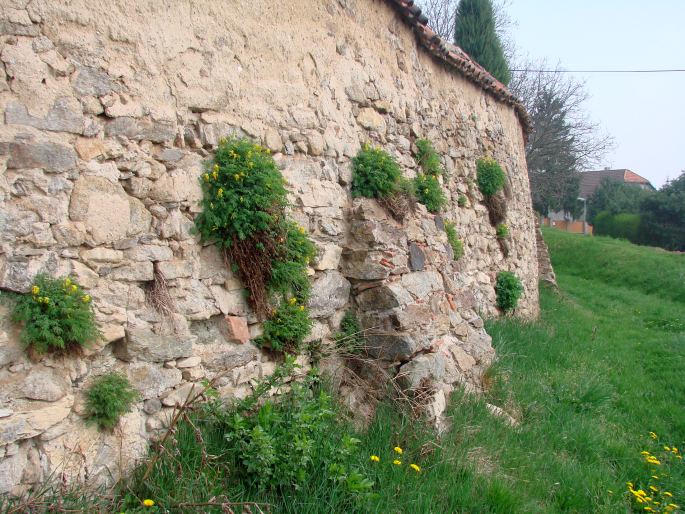
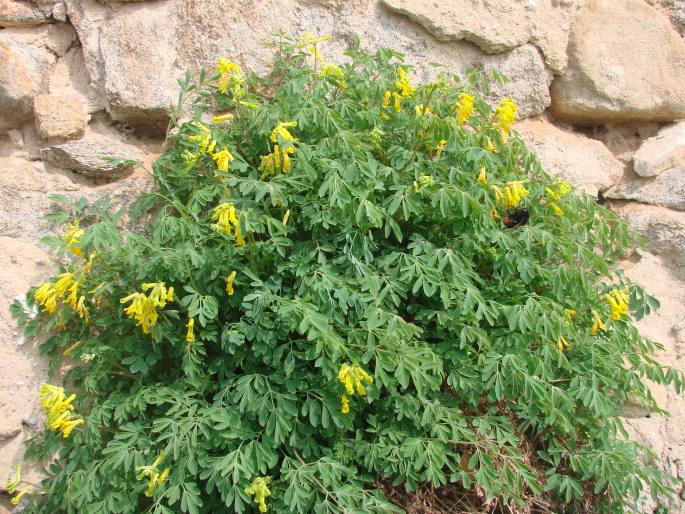

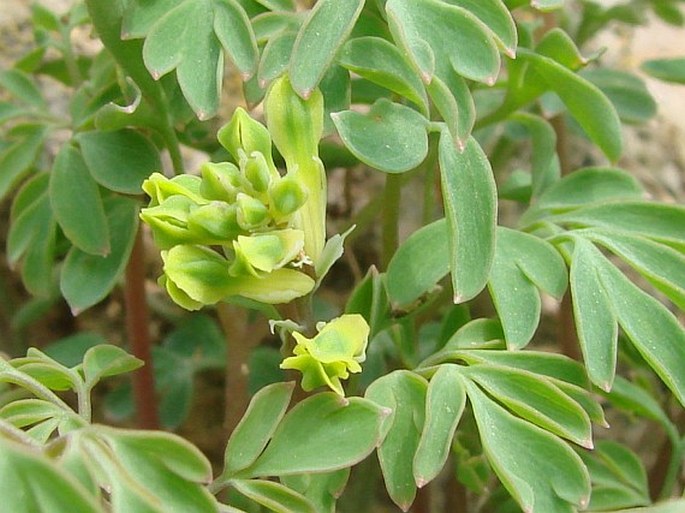

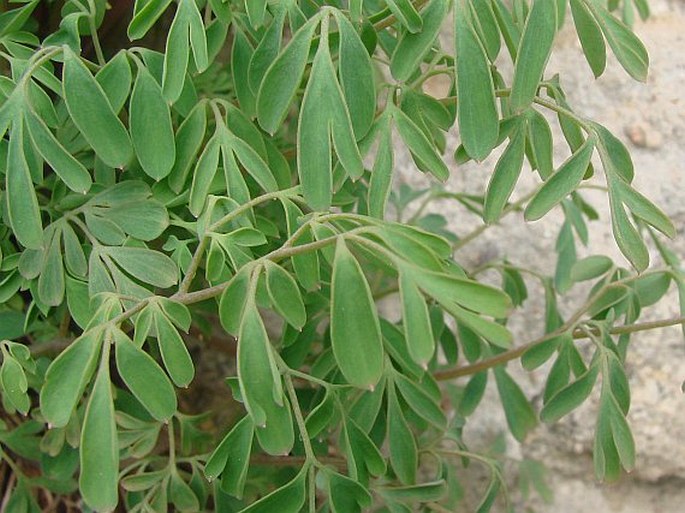
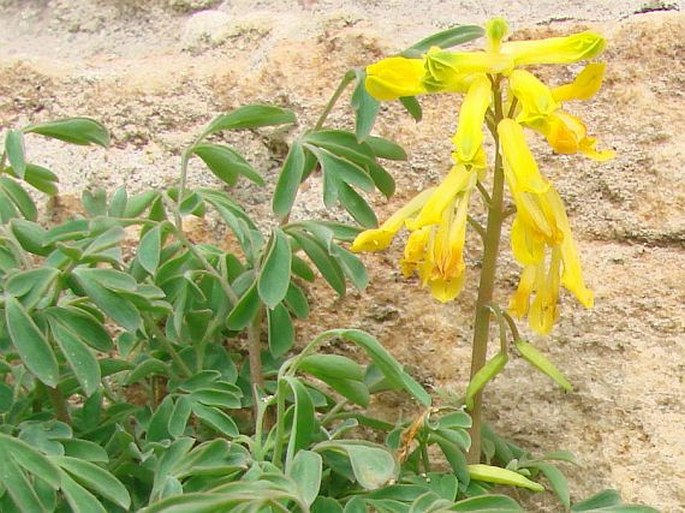
These images were taken in Czechia, Bohemia, Vrbčany (April 6, 2014).


